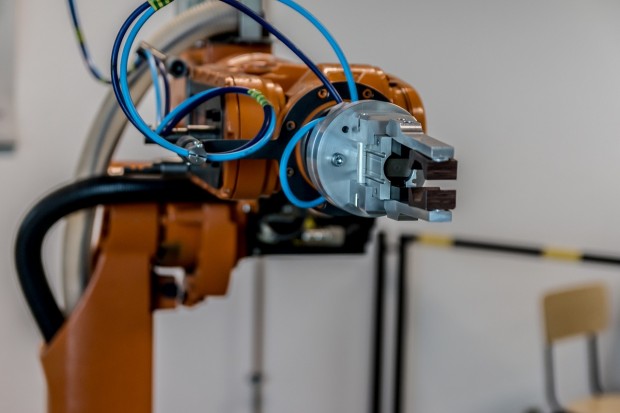Artificial intelligence has become increasingly common to assist many individuals in their respective fields, including designing construction projects. But that's not all! Different companies specializing in robotics are now launching advanced technology that addresses challenges in the building industry, such as a lack of available workforce.

Using Robots to Solve Construction Challenges
Through 3D computer architectural and engineering designs as a reference, the robot accurately positions water conduit diameters, columns, and lines across the construction site. As mentioned, professionals from various industries, such as architects, electricians, plumbers, and structural engineers, would typically complete this operation using a set of blueprints, a tape measure, and a marker line.
Businesses like Rugged and Dusty Robotics are utilizing robots to assist in drawing life-size construction model layout designs to enhance productivity and reduce the number of errors on construction sites. Building blueprints can be printed on the floor of construction sites by robots they have designed. It allows personnel to know where to build and where they should not build.
Moreover, businesses such as BotBuilt and Canvas also employ robots to help with construction. These robots assist with the installation of complex materials like drywall, as well as more accurate measurements. Most of these founders were driven by the desire to use technology to facilitate the work of human laborers.
The construction industry's labor shortage is a significant contributor to the need for more newly trained qualified workers to replace the retiring veterans of building-oriented sectors. According to Morse, the chief executive officer of Rugged, he witnessed the personnel not only leaving their capacity to finish the task but also taking critical knowledge with them. The greener employers often required more time to do the project.
Additionally, it is clarified by Kevin Albert, the founder and chief executive officer of Canvas, that the robots they sell carry over a labor-intensive trade, which is the installation of drywall and transfer of the expertise of humans into programming a robot. After acquiring the necessary materials and blueprints, the robot devises its pathway to execute the drywall installation by employing a suite of sensors for mapping purposes and an automated arm for material application. In addition to that, it is trained to operate all of the essential hand tools.
Albert noted that the precision of the machine can cut down on the number of steps required in the conventional method, which in turn helps speed up the operation. Using human labor, a task that could take five days to complete could be completed by a Canvas robot in approximately two days.
Also Read: 3 Workers Injured in Terrifying Collapse at Fort Lauderdale Construction Site Scaffolding
Advantages of Using Robotics in the Construction Industry
As robotics and automation in the building sector are still in the early stages, their long-term effect on the industry is difficult to predict. On the other hand, the development of advanced construction robotics demonstrates that construction companies will continue to discover ways to complete their projects on time while simultaneously lowering their overall costs, especially in the face of labor issues that are always there.
Even though construction robotics cannot serve as a cure-all for every challenge the industry faces, they assist companies in consistently achieving success. Thus, the construction sector is currently impacted by robotics in five different ways.
1. Construction robotics will reduce costs.
2. Innovative construction robots will solve labor shortages.
3. Human workers will have more flexibility with construction robots.
4. Construction drones will boost industry efficiency.
5. Robots reduce workplace deaths and injuries.
Related Article: 5 Best AI Tools For Architects and Designers: From Project Design to Prototypes







